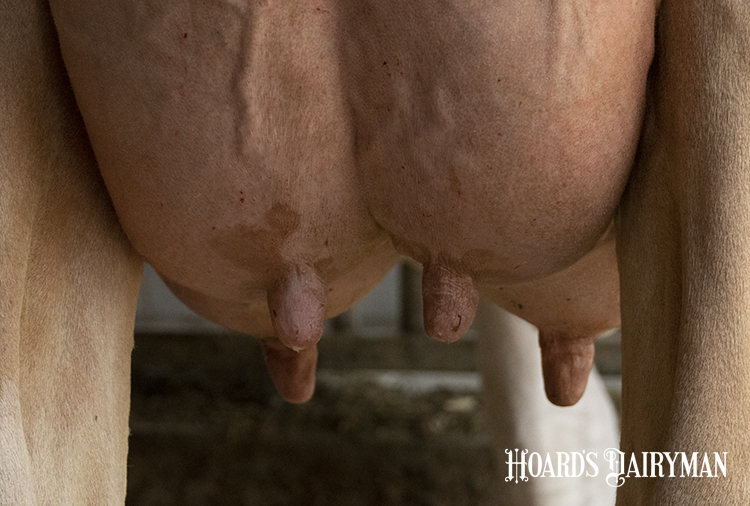
You may recall middle or high school teachers using Venn diagrams to illustrate correlations between two different subjects. A case of mastitis can be thought of as a three-way Venn diagram between a cow, its environment, and some type of bacteria, illustrated Derek Nolan in an Iowa State University webinar.
The overlap between the bacteria and the environment contributes to the spread of the pathogens, the University of Illinois Extension specialist said. Stress, whether from heat, calving, or disease challenges, results from the combination of the cow and its environment. And when the cow and the bacteria meet, exposure occurs.
The center piece of our diagram, the overlap of all three factors, is where infection occurs.
“What is a mastitis problem? It means something different for each farm,” Nolan said. For some, it may mean excessive cases of clinical mastitis. Others may be concerned with high somatic cell counts or having to use antibiotics frequently. Bulk tank reports, inline sensors, and individual cow tests can all give us data to evaluate these areas.
However, we may often stop at the “surface level” questions, Nolan explained: how many cases? How often are they occurring? Where are they occurring? He encouraged farms to dig deeper into what is the problem, why is this happening, and what actions can be taken to limit issues going forward. Milk culturing is a useful way to investigate these questions.
Best practices
Nolan first provided guidance on determining which cows to culture. Clinical cases might be the most obvious candidates so you can identify the causative pathogen and if it is environmental or infectious to find where the root of the problem is, he said.
Further, Nolan recommended culturing milk 14 days after a cow was treated for mastitis to see if the treatment was effective. Dry-off would be another time to consider culturing, especially if you are using selective dry cow therapy, he emphasized. “Two days before dry-off would be great cows to culture to determine if there’s bacteria in udder,” Nolan explained.
Necessary supplies for culturing include media plates, an incubator, and a clean space to plate the aseptically collected samples. Nolan identified that the plates he uses are typically $3 each, and the collection tubes run about 30 cents. That keeps the cost of one culture around $4 when not including the expense of the incubator, which can be purchased for anywhere from $50 to $500 depending on your preference. He noted he has seen farms have good results with the more inexpensive varieties.
If the information gained from culturing is worth that investment is up to each farm and how effectively they will use the procedure, but Nolan shared information from a study that found the return on investment was heavily dependent on the prevalence of gram-positive organisms. Those pathogens often respond to treatment, so if most cases are gram-positive, you may not benefit from the culturing information, he said.
Finally, Nolan reminded that milk quality goals have to be farm-specific and that the timing and accuracy of a milk culture will determine how valuable it is to make decisions. If it can be a good fit diagnostically and financially for your farm, cultures can provide answers to the overlapping questions of mastitis.








